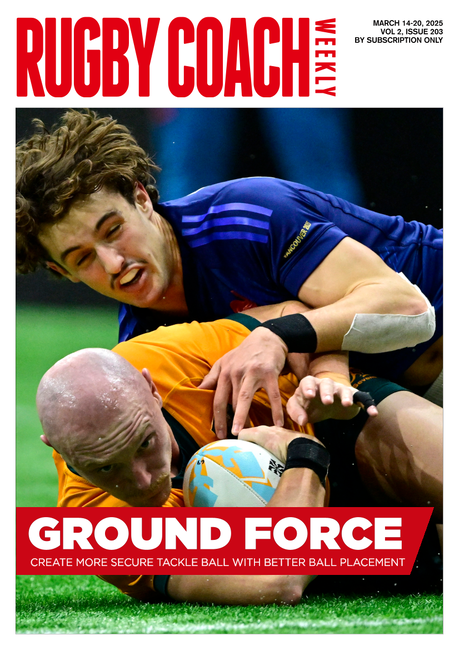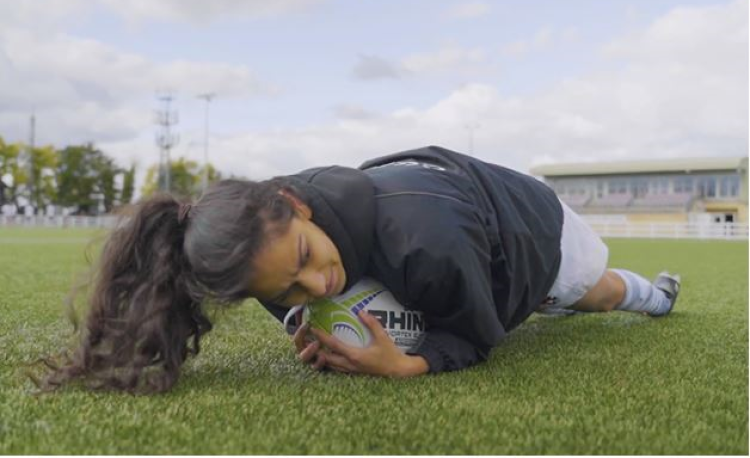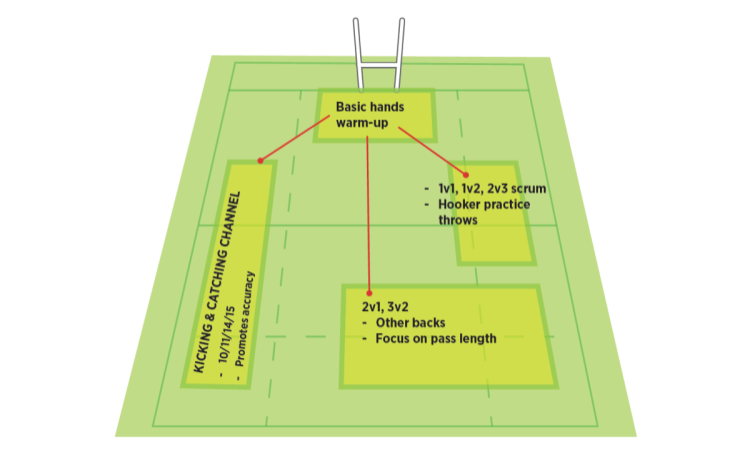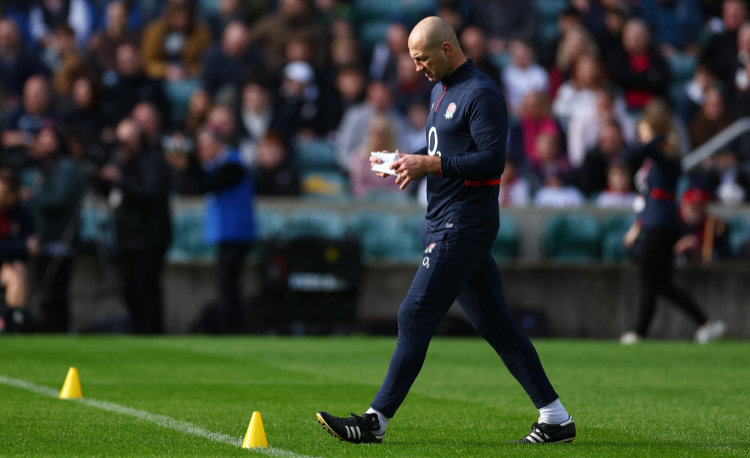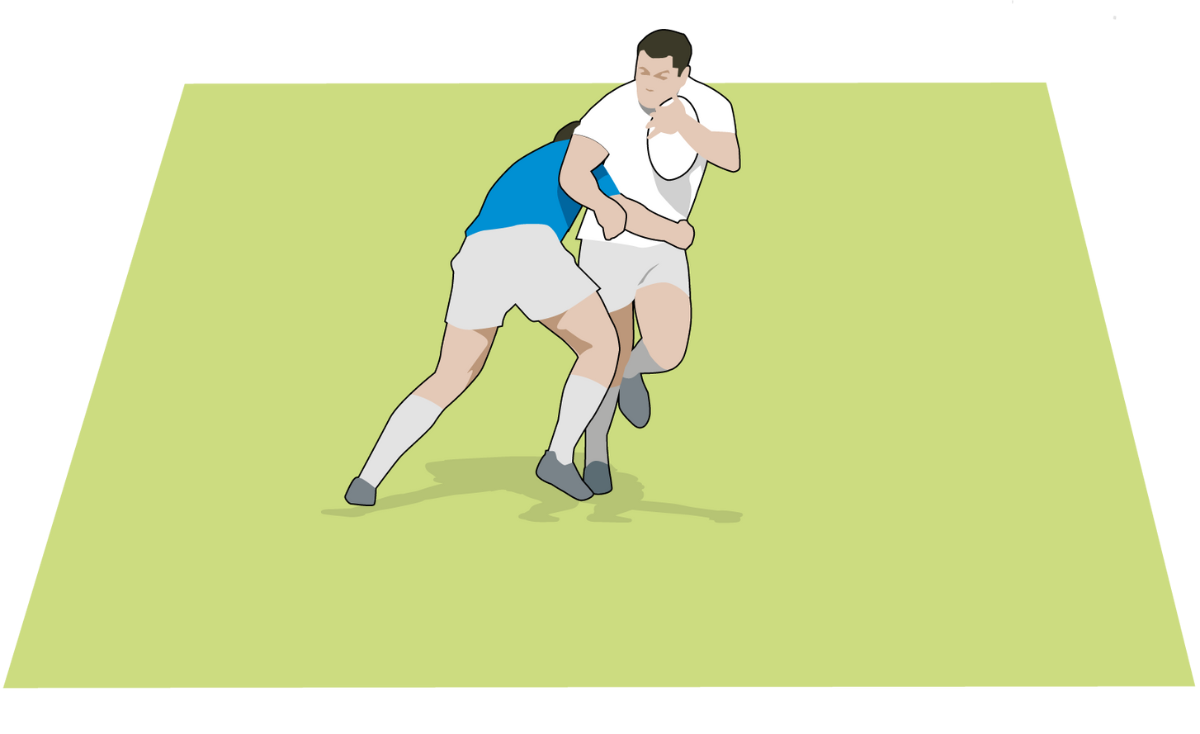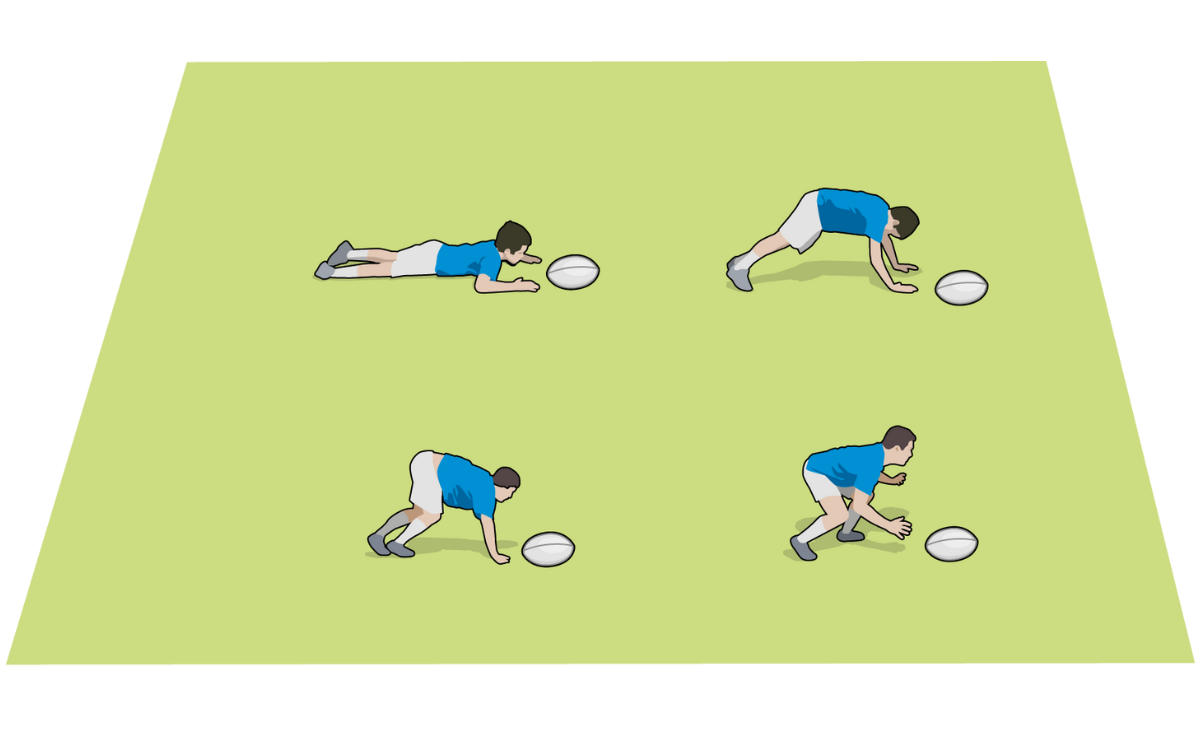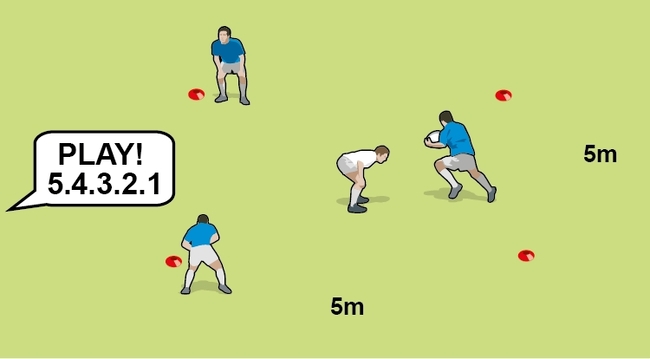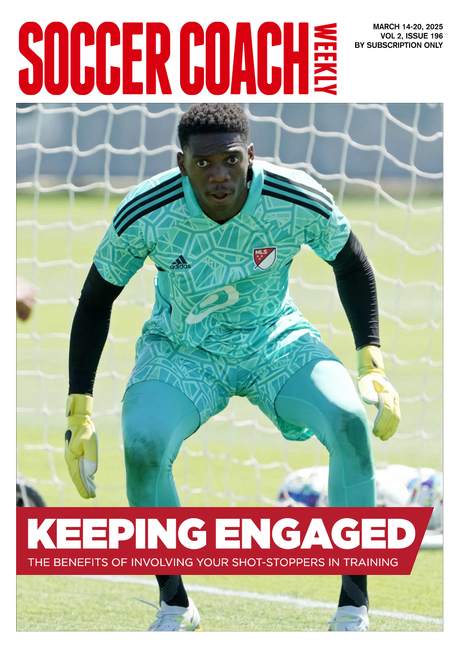Game: Don't get tagged!
Use this quick-to-set-up game, including an easy-to-adapt playground element, with rewards and forfeits thrown in. This is a game I will use at the start of sessions as a pulse raiser, sprint activation and to develop realistic evasion skills. It takes less than a minute to set up and can be played with three or more players.
Use this quick-to-set-up game, including an easy-to-adapt playground element, with rewards and forfeits thrown in.
This is a game I will use at the start of sessions as a pulse raiser, sprint activation and to develop realistic evasion skills. It takes less than a minute to set up and can be played with three or more players.
THE GAME
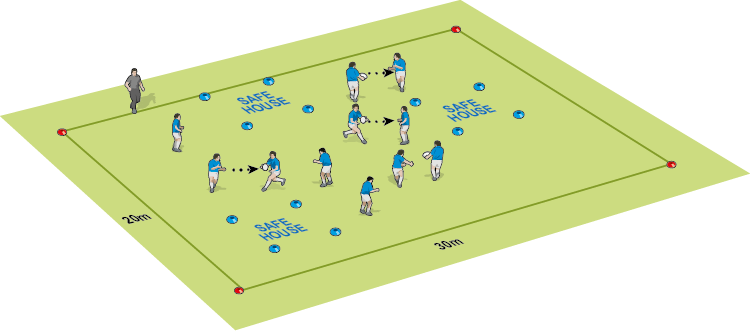
- You need three or more players, at least one ball and at least one “Safe House”.
- Start with the players moving around the agreed pitch, catching and passing a rugby ball. This is a great opportunity to fine-tune some catch-and-pass skills without it being the main focus.
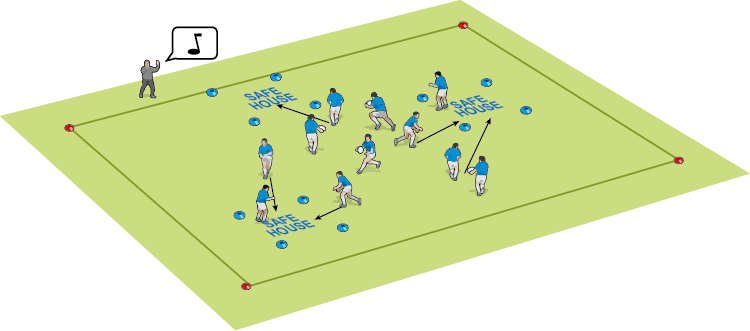
- On the whistle, the player with the ball must tag everyone else before they reach the safe house. If the ball carrier manages to get a tag, then the player touched must perform a forfeit. If the tagger fails to touch anyone, then they have a forfeit themselves.
- Once everyone has either been tagged or made it to a safe house, players go back to passing the ball on the move.
DEVELOPING THE GAME
I tend to play this game with older teenagers and seniors and find that the childish nature of the game usually results in fun, competition and hidden skill development. To make the game more challenging, I will play this with a large group, multiple balls of different types and multiple safe houses.
I will constrain the players by only allowing a certain number of players to enter each safe house. This should help develop heads-up observations, and decision-making and change how they use their movement skills.
You may also change the game by allowing a ball carrier to pass the ball into someone’s body to tag them. This will work on passing accuracy whilst also giving the ball carrier a decision to overcome: ‘If I pass the ball I could make a tag, but I could also lose the ball and have to retrieve it’.
HOW WOULD THIS WORK FOR YOU?
A good pitch size for 15 players would be using the 22m area and the full width. If you have a younger group, I would suggest cutting the width in half. Within this playing field I would set up three randomly placed safe houses.
The size of the pitch can also help develop either speed and fitness if it’s larger, and evasive skills if smaller.
I would start by saying a tag can only be made if the ball carrier stays in control of the ball the whole time, but can progress this to any ball that hits an opposition player, whether in hands or not, counting as a tag.
For me, forfeits can be a range of things. It is important to understand your group and what fun looks like for them. This game is not supposed to carry any punishments so I would limit using push-ups or any other physical activity as a forfeit.
One that usually gets a good reception within my teams is to have the three players who got tagged the most sing for 30 seconds at the end of the activity.
Another forfeit is to take half the group that got tagged the most; they must give the other half a piggyback into the clubhouse or changing rooms once the session is finished.
A player favourite, that must be supervised well until you can fully trust your group, is that the tagger can flick the ear of the person they just tagged.
Related Files
Newsletter Sign Up
Coaches Testimonials

Gerald Kearney, Downtown Las Vegas Soccer Club

Paul Butler, Florida, USA

Rick Shields, Springboro, USA

Tony Green, Pierrefonds Titans, Quebec, Canada
Subscribe Today
Be a more effective, more successful rugby coach
In a recent survey 89% of subscribers said Rugby Coach Weekly makes them more confident, 91% said Rugby Coach Weekly makes them a more effective coach and 93% said Rugby Coach Weekly makes them more inspired.
Get Weekly Inspiration
All the latest techniques and approaches
Rugby Coach Weekly offers proven and easy to use rugby drills, coaching sessions, practice plans, small-sided games, warm-ups, training tips and advice.
We've been at the cutting edge of rugby coaching since we launched in 2005, creating resources for the grassroots youth coach, following best practice from around the world and insights from the professional game.

